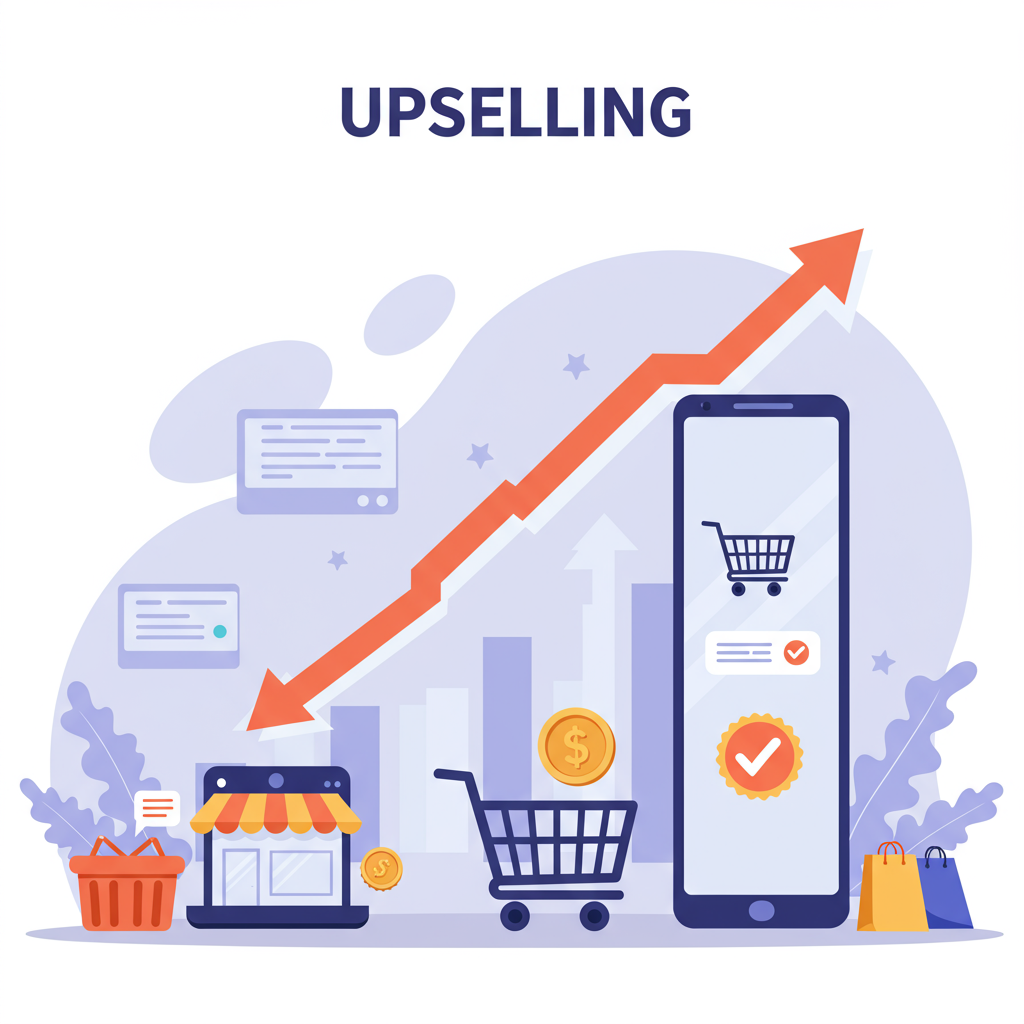Discover powerful strategies to increase your Average Order Value and customer satisfaction without acquiring new customers.
Hello fellow Shopify merchants! Today, I want to talk about a powerful strategy that can significantly boost your store’s revenue: upselling.
Many of us focus heavily on acquiring new customers, which is crucial, but often overlook the immense potential within our existing customer base.
Upselling is about encouraging customers to purchase a more expensive, upgraded, or premium version of a product they are already interested in.
Think of it like this: if a customer is looking at a basic smartphone, upselling would involve suggesting the model with more storage, a better camera, or a faster processor.
It’s not about tricking customers; it’s about providing them with better value and enhancing their overall experience with your brand.
The primary benefit of a well-executed upsell strategy is an immediate increase in your Average Order Value (AOV).
A higher AOV means more revenue per customer, without necessarily increasing your marketing spend on new acquisitions.
It also contributes to a higher Customer Lifetime Value (CLTV), as customers feel they are getting more out of their purchases over time.
Before we dive deeper, let’s clarify the difference between upselling and cross-selling, as they are often confused.
Cross-selling involves suggesting complementary products. For example, if a customer buys a coffee machine, cross-selling would be offering coffee beans or mugs.
Upselling, on the other hand, is about upgrading the *original* product. So, for the coffee machine, it would be suggesting a more advanced model with a built-in grinder.
Both are valuable, but our focus today is on mastering the art of the upsell to maximize each transaction.
So, how can you effectively implement upselling on your Shopify store? It starts with understanding your products and, more importantly, your customers.
**Relevance is Key:** The upsell offer must be directly relevant to the product the customer is viewing or has added to their cart. Irrelevant offers feel pushy and can deter a sale.
**Highlight the Value:** Clearly articulate *why* the upgraded product is better. Is it more durable? Does it have more features? Will it save them time or money in the long run? Focus on benefits, not just features.
**Strategic Timing:** When is the best moment to present an upsell? There are several effective points in the customer journey, each with its own advantages.
**Product Page Upsells:** Displaying a ‘compare models’ or ‘upgrade to’ section directly on your product pages can be very effective, catching interest early.
**In-Cart Upsells:** Once an item is in the cart, you can suggest a premium version of that item before they proceed to checkout, often as a subtle pop-up or banner.
**Post-Purchase Upsells:** This is a powerful, often underutilized strategy. After a customer completes their purchase, you can offer a one-time upgrade or a related premium product on the thank-you page.
**Pricing Psychology:** The price difference for the upsell should feel like a small, justifiable increment for the added value. A huge jump can be off-putting and lead to cart abandonment.
**Bundling for Value:** Sometimes, bundling a premium version with a small, related accessory at a slightly higher price can make the upsell more appealing than just the premium product alone.
**Tiered Pricing:** If you offer services or digital products, a tiered pricing model (e.g., Basic, Pro, Premium) naturally encourages customers to consider the higher tiers by showcasing clear value progression.
**Personalization:** Leverage customer data (if available) to tailor upsell offers. A returning customer might appreciate an upsell based on their past purchases or browsing history.
**Leverage Shopify Apps:** The Shopify App Store offers numerous tools specifically designed for upselling and cross-selling. These apps can automate the process and provide crucial analytics.
Look for apps that allow you to create smart upsell funnels, A/B test different offers, and track performance metrics like AOV uplift and conversion rates.
**Measure and Optimize:** Don’t just set it and forget it. Continuously monitor your upsell conversion rates and Average Order Value.
Experiment with different offers, placements, and messaging. What works for one product might not work for another, so constant iteration is key.
**Common Pitfalls to Avoid:** Don’t be too aggressive or pushy. The goal is to help the customer find a better solution, not to force a sale they don’t want.
Avoid offering too many choices, which can lead to decision paralysis. Keep your upsell offers focused and clear, presenting only the most compelling options.
Remember, a successful upsell makes the customer feel like they’ve made a smarter, more valuable purchase, enhancing their satisfaction.
It’s about enhancing their satisfaction and building long-term loyalty, not just extracting more money from a single transaction.
By implementing these strategies thoughtfully, you’ll not only see your revenue grow but also cultivate happier, more engaged customers who trust your recommendations.
What do you think about this article? Do you have any upsell strategies that have worked wonders for your Shopify store?
I encourage you to start experimenting with upselling today. Even small improvements can lead to significant gains over time for your business.
Happy selling!






